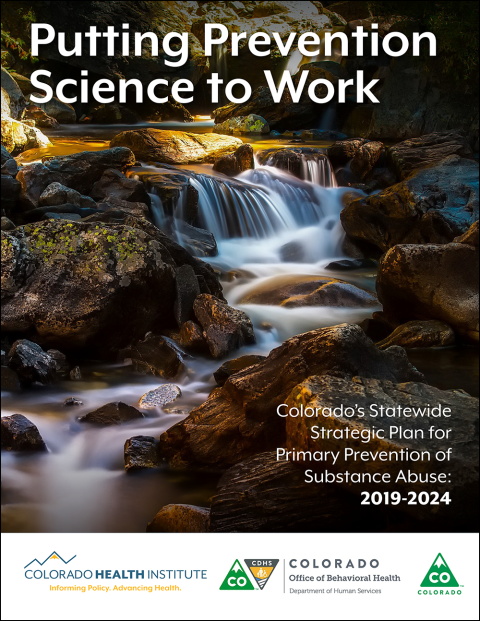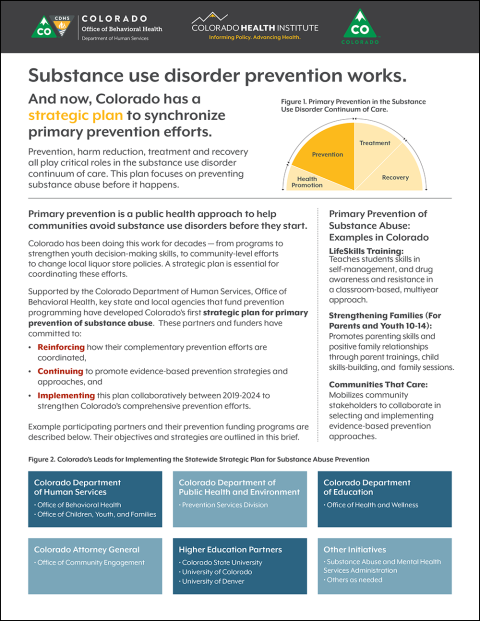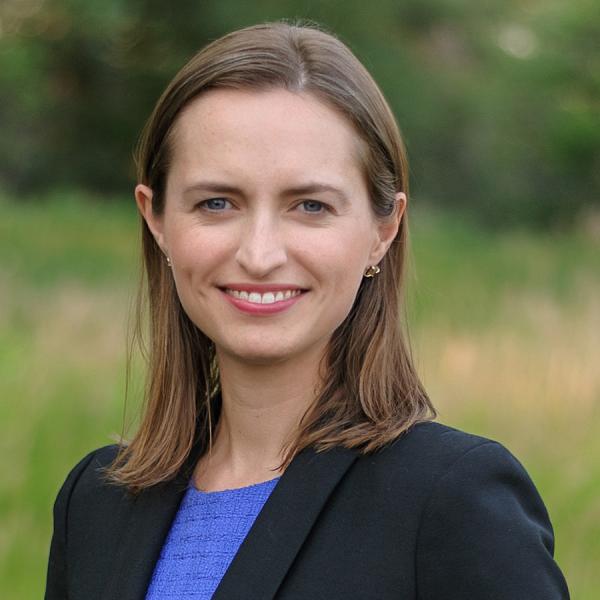Substance use is a growing problem in many Colorado communities: The use of marijuana, alcohol, cocaine, and tobacco are all more prevalent here than in almost any other state.
Drug overdoses are becoming increasingly common. Around the state, people and communities are looking at ways to help avoid substance use disorders before they start. This public health approach is known as “primary prevention.”
Now, for the first time, Colorado has a statewide strategic plan for primary prevention of substance use, created by the Colorado Health Institute (CHI) for the Colorado Department of Human Services, Office of Behavioral Health (OBH).
Coloradans have been doing this work for decades at the state and local level — from evidence-based prevention programs such as LifeSkills Training that aims to strengthen youth decision-making skills, to community-level efforts to regulate liquor stores by limiting their density, holding them liable for underage sales, and limiting days and hours of sale. But these efforts have not always been coordinated. And the way these programs can be funded has changed over time, with, for instance, the influx of retail marijuana tax revenue, much of which is earmarked for prevention programs.
That’s why the OBH undertook a needs assessment and planning process in 2017-18 to streamline and coordinate programs and understand the funding streams available to support prevention. OBH retained CHI to conduct the needs assessment and to aid in the strategic planning process, which engaged communities around the state.
The result was a new Statewide Strategic Plan for Primary Prevention. The strategic plan focuses on:
- Advancing prevention by using evidence-based programs and strategies
- Strengthening the prevention workforce
- Aligning state agency funders of prevention
- Addressing inequities in substance abuse and access to prevention services
This plan promotes programs, policies and strategies addressing risk and protective factors that predict or protect against substance abuse and other negative health behaviors.
Colorado will focus on upstream approaches that have been shown to help support youth and prevent substance use disorders by building youth resilience; strengthening families, communities, and schools; and changing environments, policies, and social norms.
The strategic plan builds on the needs assessment completed in 2017. The assessment process included convening an advisory group, surveying OBH’s prevention grantees, creating a financial map, analyzing quantitative data, and conducting broad community engagement with over 200 families, community prevention program administrators, and substance use experts across the state.
The assessment revealed disparities in substance use, prevention, and program funding. For example, it revealed six rural counties that did not receive any direct prevention funding in fiscal year 2017-18 (see map below). And it highlighted groups experiencing a disparate level of substance use, such as “transition-age” youth like the 18-to-25-year-old population, lesbian, gay, and bisexual (LGB) Coloradans, and those living in geographic regions such as Pueblo and the Upper Arkansas Valley including Lake, Chaffee, Fremont, and Custer counties.
The strategic plan seeks to address those equity challenges. Each of the goals identified in the plan is accompanied by strategies that focus on reducing inequities: For instance, the plan includes strategies for increasing the diversity of prevention providers by geographic representation, race/ethnicity, and other attributes and for ensuring that funders target money to underserved areas.
Changing trends in substance use disorder won’t happen overnight. But the Office of Behavioral Health and others focused on improving health in Colorado now have a clear roadmap for ensuring that primary prevention programs in the state are reaching who they need to reach — and that young people in communities throughout the state have a better shot at avoiding a substance use disorder.




